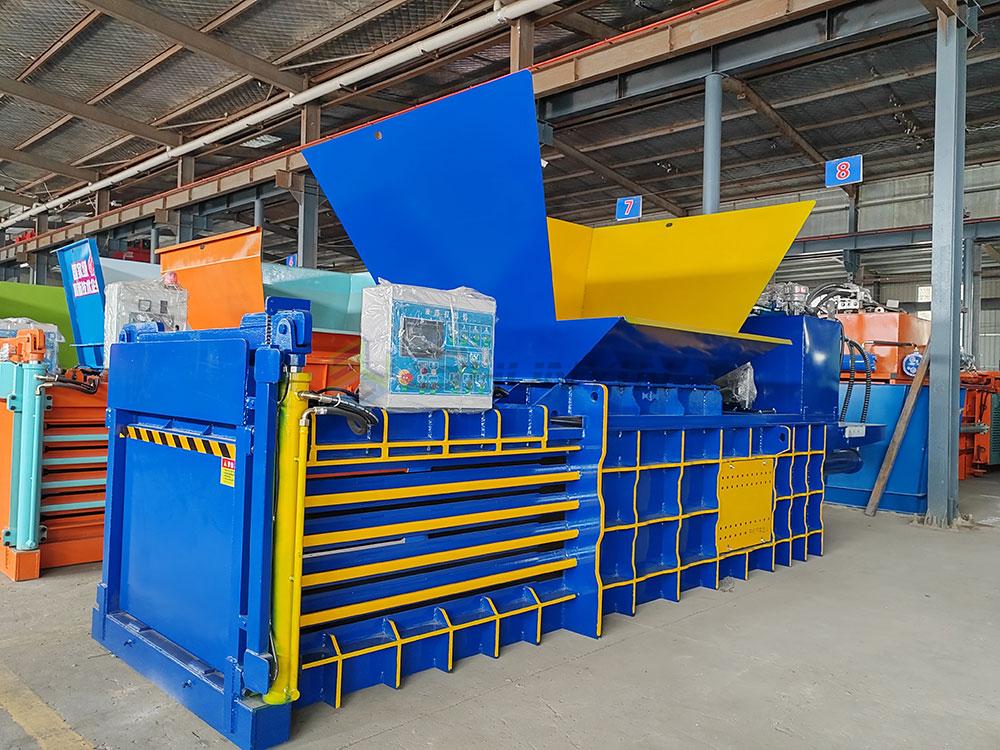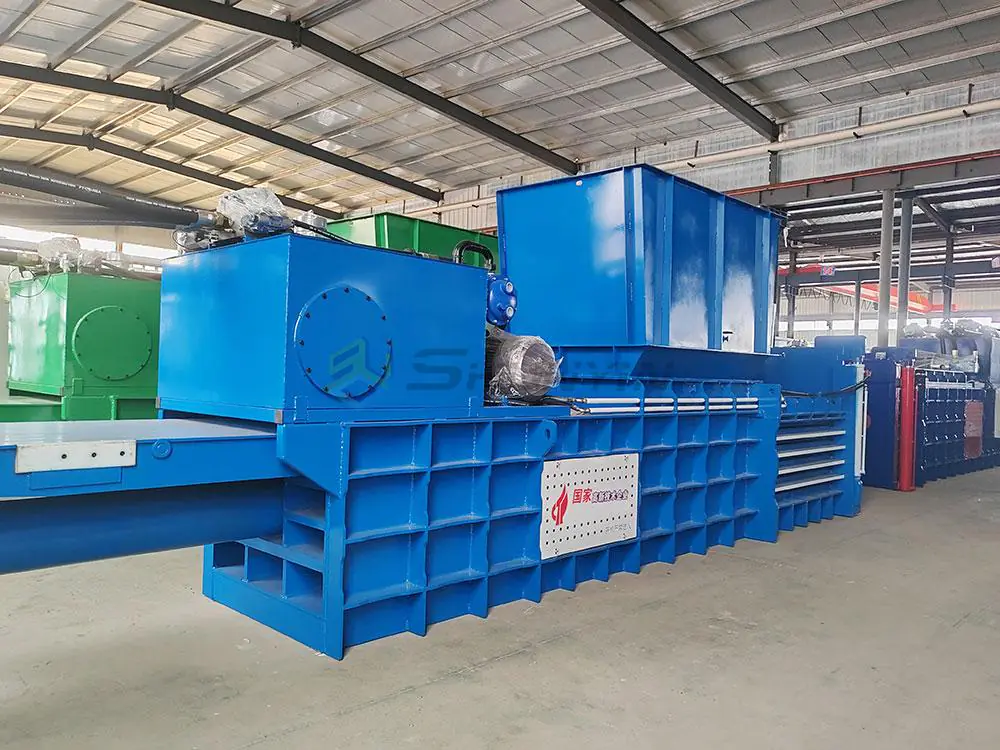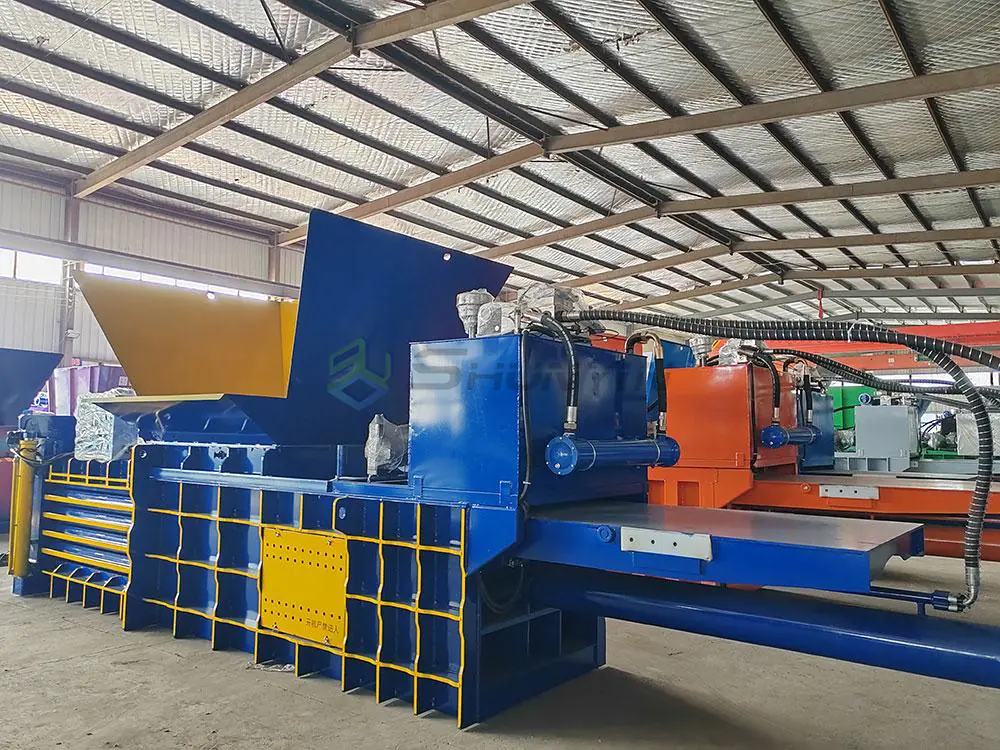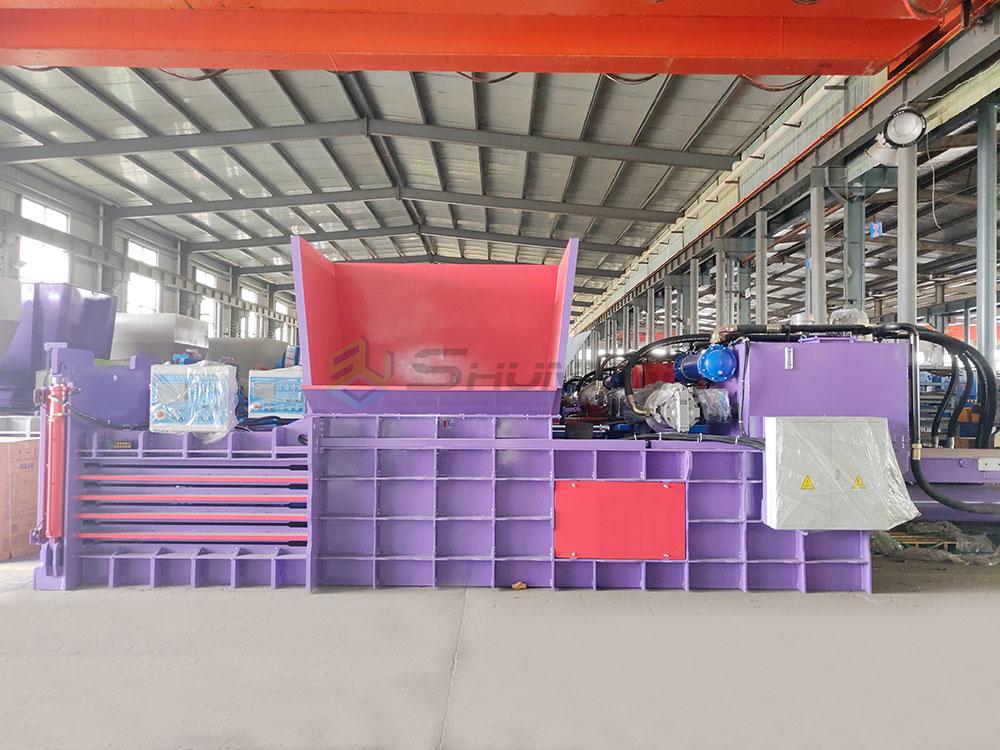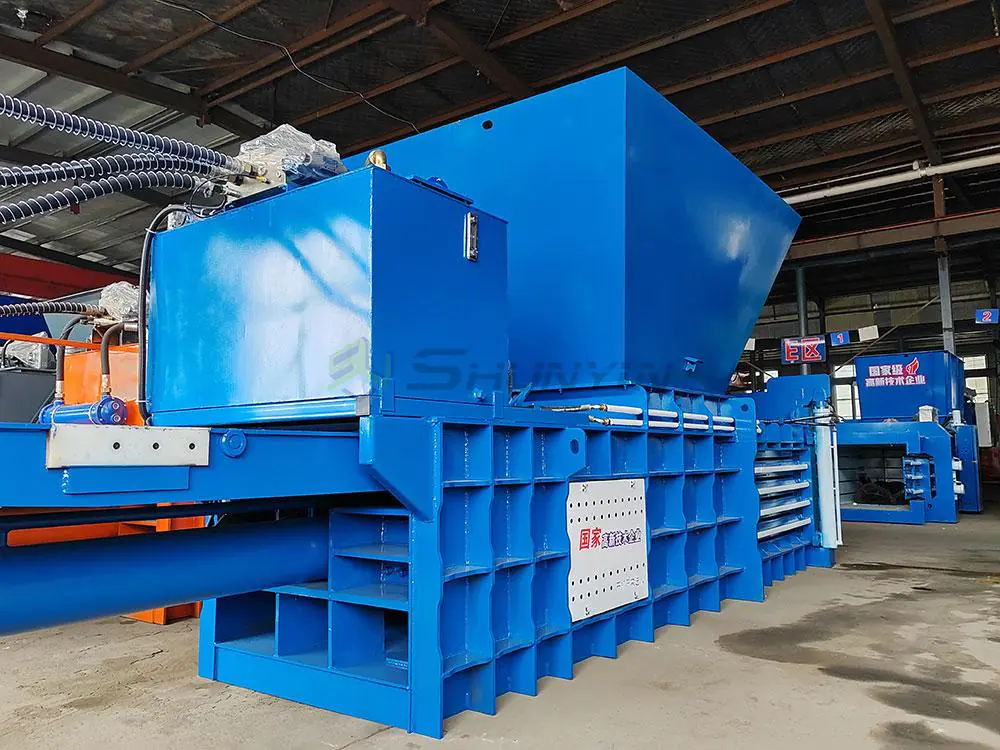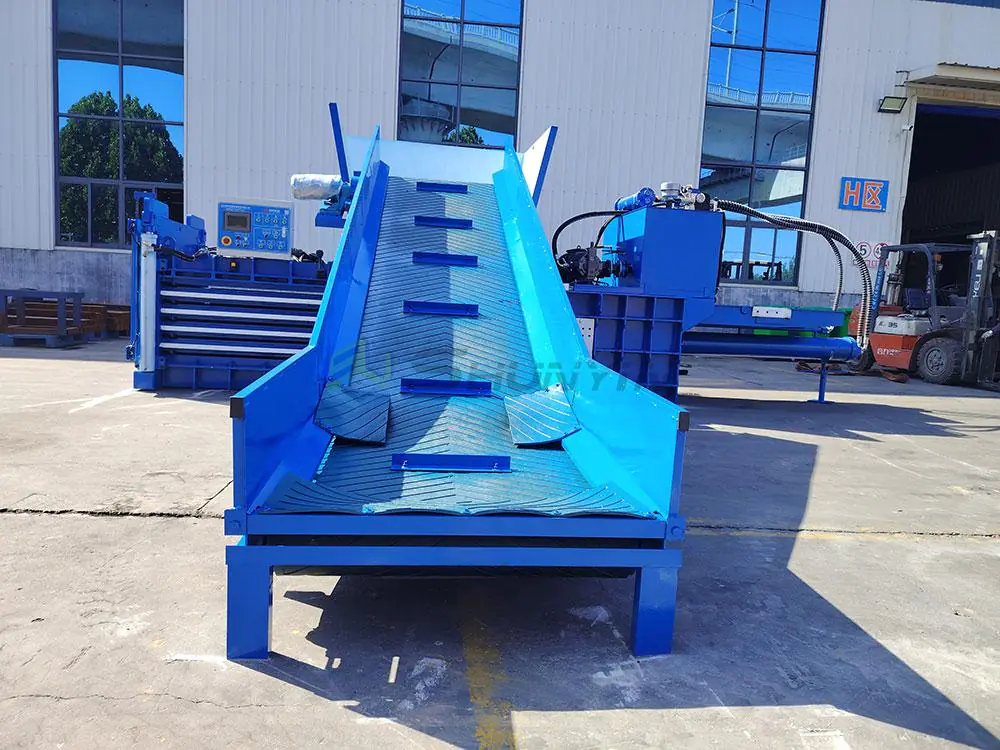
Managing waste piles up costs daily. It eats space and drains your budget. Our balers crush this problem. Compacting waste saves you money immediately.
A closed-end horizontal baler1 compresses materials like cardboard or plastic into dense, uniform bales using hydraulic pressure. With front and rear doors securing the load, these machines cut waste volume by 90%, reduce hauling costs, and boost recycling profits.
I see companies waste funds on inefficient equipment weekly. With 5 production lines active daily, we craft each baler to meet specific needs. Choosing the right technology transforms your operation. Let’s explore core questions.
What is a horizontal baler1?
Sprawling cardboard swamps your facility? Horizontal balers tackle these mountains. Feed material continuously, compress horizontally, and bale it out.
Horizontal balers crush large volumes of recyclables on a conveyor-fed platform. Material enters sideways, hydraulic rams press left-to-right to form tight bales, and they eject completed bundles for storage or transport.
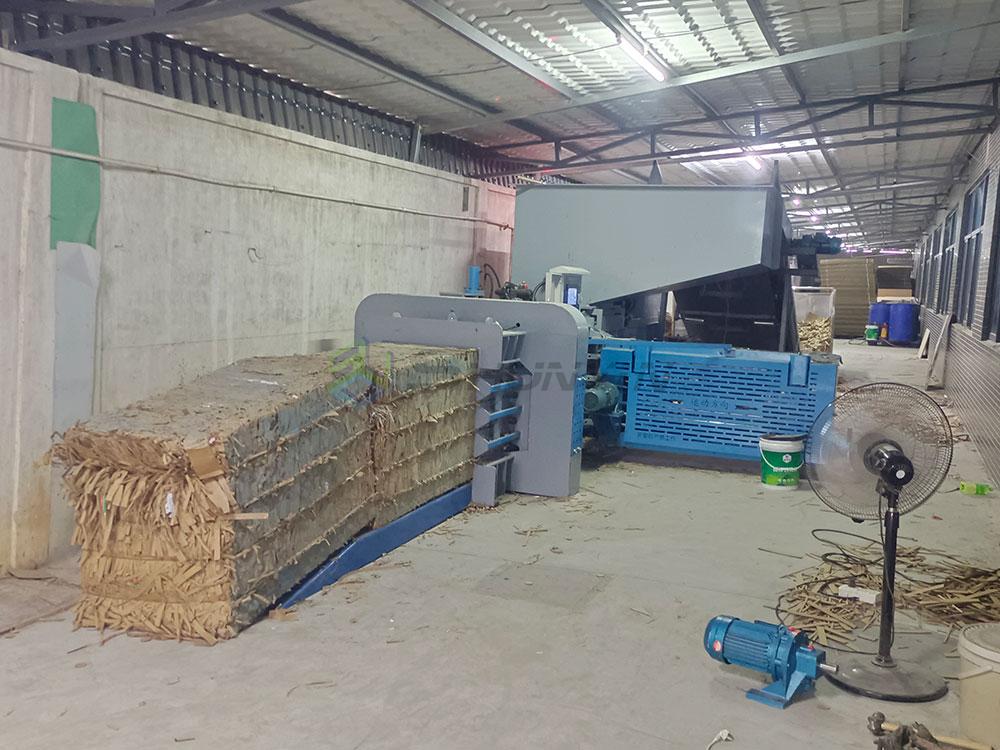
Core Operation Explained
Think "feeding, crushing, binding." For Lambert in Canada, our models deliver predictable results:
| Stage | Process Description | Industrial Advantage |
|---|---|---|
| Loading | Conveyor feeds materials steadily | Handles 30% more volume than vertical balers2 |
| Compression | Dual hydraulic rams squeeze horizontally | Achieves 40-50 lbs/ft³ density |
| Binding | Automatic wires encase rectangular bales | Custom binding for varied material types |
Watching our clients succeed confirms this design. One client processes plastic film waste daily. We built oversized ram cylinders that increased throughput by 2.8 tons daily. These machines save on staffing because they need only 2 operators per shift. Their open charging boxes easily swallow irregular items like plastic bottles.
What is the difference between a vertical and horizontal baler?
Stuck with slow-output machines? Vertical balers limit capacity. Horizontal systems push efficiency higher for demanding operations.
Vertical balers press waste downward, taking floor space but lower cost. Horizontal balers crush sideways with conveyor input, offer triple the output, and suit high-volume recycling stations.

Matching Baler to Business Size
Scale decides everything. Most corporate buyers misunderstand this:
| Factor | Vertical Baler | Horizontal Baler |
|---|---|---|
| Footprint | Tall / Minimal width | Wide / Needs conveyor space |
| Daily Capacity | Max 5-10 tons | 15-50+ tons |
| Staff Needs | 1-2 operators | Automated systems |
| Investment | $10K – $60K | $60K – $200K |
For Canadian buyers like Lambert, horizontal baler1s earn back costs faster. We equipped Tokyo recyclers with closed-end units packing PET bottles. Their ROI came in under 16 months because reduced transport costs offset the purchase. Always ask your supplier to demonstrate throughput metrics before ordering.
What is a bailer and a baler?
Seeing "bailer" in documents raises concerns. Confused terminology risks costly misunderstandings.
"Baler" specifically refers to waste-compacting machinery. "Bailer" describes legal terms or water-removing vessels – never recycling equipment. Verbiage matters in logistics.
Why Precise Terminology Prevents Problems
Industrial jargon trips buyers:
- Equipment Clarity
Baler: Hydraulic press for cardboard/plastic
Bailer: Ship bucket or financial defendant role - Contract Safety
Misused terms can void equipment agreements - Search Efficiency
Correct spelling impacts Google visibility
We encountered certification fraud through terminology manipulation. A buyer sought "textile bailers" but got inadequate ship gear. Our machines hold ISO9001 and CE certificates – visible at https://lemonchiffon-shark-638535.hostingersite.com/. Request copies directly to confirm legitimacy.
What is a garbage baler?
Unsealed trash invites odors and pests? Specialized garbage balers3 transform messy waste into neat bricks.
Garbage balers compact municipal or industrial refuse into compact units. Moisture-resistant models secure organic materials, while heavy-duty variants crush bulky items, simplifying landfills and recycling.

Customization for Waste Types
Daily waste handling has unique demands:
Moist Control Models
Closed-end horizontal baler1s shine here:
- Polypropylene straps resist rotting
- Stainless rams handle acid leachates
- Trapped fluids remain inside bales
Bulky Item Shredding
Our Canadian buyers request add-ons:
- Pre-compression plates smash pallets
- Hardened blades fragment appliances
- Extra hydraulic force locks liquids
One project sealed restaurant waste in Singapore where 90° humidity plagued disposal. Our modified ram cycles contained 40% more material while eliminating spillage. For tough organic waste, we suggest higher PSI cylinders.
Conclusion
Choose closed-end balers for high-volume efficiency. They slash costs through dense baling and customizable designs. Visit https://lemonchiffon-shark-638535.hostingersite.com/contact/ to transform your waste strategy today.
-
Explore this link to understand the mechanics and benefits of horizontal balers, crucial for efficient waste management. ↩ ↩ ↩ ↩
-
This resource will clarify the differences between vertical and horizontal balers, helping you make informed decisions for your operations. ↩
-
Learn about garbage balers and their role in waste management, essential for maintaining cleanliness and efficiency in disposal processes. ↩


